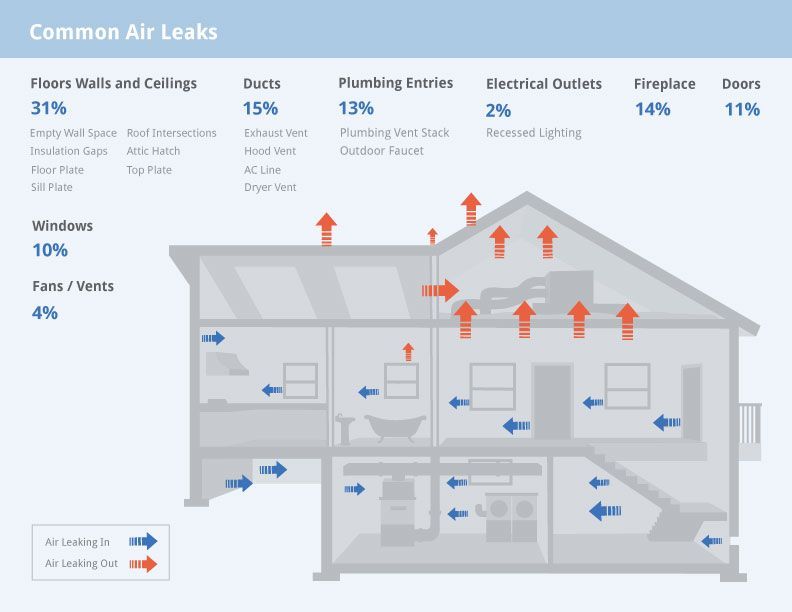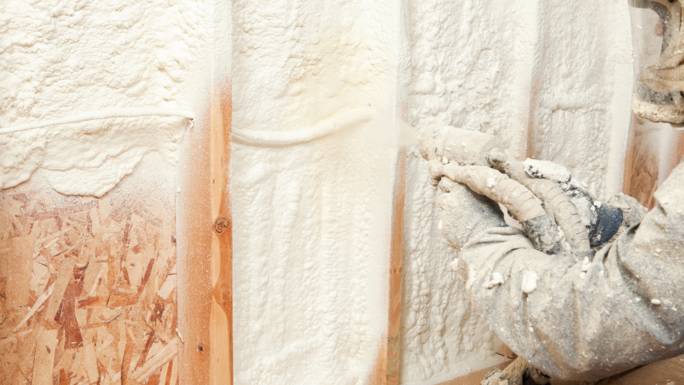Home Insulation Services – Your Comfort Is Our Priority!
Insulation is one of the most important tools you have for managing your home’s overall comfort and energy consumption. Is your home too hot in the summer despite running your AC? Is your home drafty and cold during the winter despite running your heat constantly? If so, your home may not be insulated properly!
In Providence, RI, maintaining a comfortable home while keeping energy bills under control is a challenge many homeowners face. Wattson Home Solutions, a trusted spray foam insulation contractor, specializes in delivering top-quality spray foam insulation that enhances energy efficiency, reduces drafts, and lowers heating and cooling costs. Investing in professional insulation not only boosts your home’s comfort but also offers long-term savings that make a real difference. Don’t wait to improve your home’s performance—contact Wattson Home Solutions today and take the first step toward a smarter, more energy-efficient living space.
How Do I Insulate Better in Rhode Island?
Insulation comes in many different materials and can be installed using several different techniques. Before we look at the different types of insulation, we need a way to compare the effectiveness of one type of insulation against another.
Measuring Effectiveness
Being able to determine how effective different types of insulation are is essential in choosing which type to use. The purpose of insulation is to stop the transfer of heat, and each type of insulation has a rating of how well the material resists heat flow through it. The higher the R-value, or resistance value, the greater the material resists heat flow; therefore, the greater its insulating capability.
Which Insulation Is the Right Choice?
Determining which insulating material is right for you depends on what area of the home needs insulating, how much insulating power is necessary, and how many square feet you need to install. Comparing your needs with your budget will help make sure you get the best material for your home.
Types of Insulation We Offer:
Fiberglass Insulation: Fiberglass insulation is a popular choice for homeowners seeking effective thermal protection. Made from fine glass fibers, it provides excellent heat resistance and is ideal for reducing energy costs. Fiberglass insulation is available in batts and rolls, making it versatile for various applications, including walls, attics, and floors.
Blown-in Cellulose Insulation: Blown-in cellulose insulation is an eco-friendly option made from recycled paper products treated for fire resistance. It is perfect for insulating hard-to-reach areas, such as attics and wall cavities. This type of insulation conforms to any space, ensuring comprehensive coverage and superior thermal performance, helping to maintain a comfortable indoor environment.
Spray Foam Insulation: Spray foam insulation offers unmatched energy efficiency and air sealing capabilities. Applied as a liquid, it expands into a foam, filling gaps and crevices to create an airtight barrier. This insulation type is ideal for attics, walls, and crawl spaces, providing exceptional thermal resistance and moisture control, contributing to improved indoor air quality and reduced energy bills.
Insulation Advantages & Incentives Include:
- Energy Savings reduces your heating and cooling costs.
- 0% Heat Loan: Apply for 0% APR financing for eligible upgrades.
- Helps Prevent Ice Dams and the damage they may cause.
- Improves air quality, reduces allergens and mold in your home, and protects your family.
- Sound dampening absorbs and reduces unwanted noise from the street and between rooms.
Adding insulation to your home can be quick and clean. In many cases, installation can be performed in a single visit. Find out how well your current insulation stacks up by scheduling a no-cost energy audit today.
Air Sealing
Properly air-sealing cracks and openings in your home can significantly reduce heating and cooling costs. Air infiltration can account for 30 percent or more of a home’s heating and cooling costs and contribute to problems with moisture, noise, dust, and the entry of pollutants, insects, and rodents.

Air sealing is a high-impact energy efficiency upgrade. Whenever there is a difference in air temperature between the inside of your home and the outside, you will have air trying to escape or enter your home caused by pressure. Common leaks are typically found in gaps around electrical and plumbing chases, gaps in door frames, gaps around chimneys, and other areas throughout your home. Air should enter and leave your home the same way it came in: through proper ventilation.
Blower Door Tests
It's not always easy to find where your energy is escaping. This is why Wattson Home Solutions will perform a blower door test that forces air through your home. This helps to reveal the areas where conditioned air is escaping and determines your home's air tightness. Your Wattson Home Solutions Advisor will then do a visual, spot-test inspection of your home while looking for each area of air leakage, often with the use of a thermal imaging camera.
- Better understand your home’s energy loss.
- Reducing energy consumption due to air leakage.
- Avoiding moisture condensation problems.
- Avoiding uncomfortable drafts caused by cold air leaking in from the outdoors.
During your home's air sealing project, we stop air leaks with caulk, foam, and other materials. Depending on the size of your home, most installations are completed within a single visit. Are you a homeowner in Worcester County? Schedule your no-cost home energy audit now!
Thermal Imaging
Energy auditors use thermography as a tool to help detect heat losses and air leakage in building envelopes.
Is your home well insulated, but you suspect you have missing insulation in your home? Are there cold and drafty areas, and you wonder just how much or what is missing? Did your builder miss something? Are you paying higher utility bills as a result?
Infrared thermography is a well-accepted method of imaging and evaluating the thermal efficiency of building insulation, doors, windows, and other penetrations, along with the performance and condition of heating and cooling systems. Temperature deviations, which may indicate larger problems, are rendered visible, allowing improvements to be carried out with certainty. No matter the age of the structure, an infrared scan always proves beneficial, providing fast detection for fast action!
In Providence, RI, maintaining a comfortable home while keeping energy bills under control is a challenge many homeowners face. Wattson Home Solutions, a trusted spray foam insulation contractor, specializes in delivering top-quality spray foam insulation that enhances energy efficiency, reduces drafts, and lowers heating and cooling costs. Investing in professional insulation not only boosts your home’s comfort but also offers long-term savings that make a real difference. Don’t wait to improve your home’s performance—contact Wattson Home Solutions today and take the first step toward a smarter, more energy-efficient living space.
Are you tired of high energy bills and drafty rooms? Wattson Home Solutions is here to help you achieve optimal comfort and efficiency in your home. As your trusted home insulation contractor in Providence, RI, we specialize in keeping your living spaces cozy all year long—while helping you save money. Don’t wait! Call Wattson Home Solutions at (855) 627-7674 today for your free insulation assessment!
Home Insulation Contractor Services in Providence, RI
At Wattson Home Solutions, we understand the unique climate challenges that Providence homeowners face. As an experienced home insulation contractor, we provide professional solutions tailored to your home’s needs. From attic insulation to basement sealing, our team uses industry-leading products and methods that maximize energy savings and enhance indoor comfort.
We offer a full range of residential insulation contractor services, including:
• Attic insulation installation and upgrades.
• Wall insulation solutions.
• Crawl space and basement insulation.
• Air sealing for reduced drafts.
• Free home energy audits and consultations.
Benefits of Choosing a Residential Insulation Contractor
Hiring a specialized residential insulation contractor like Wattson Home Solutions means getting expert guidance and skilled installation.
Proper insulation delivers these key benefits:
• Lower energy bills thanks to reduced heat loss.
• Enhanced indoor comfort in every season.
• Improved air quality and reduced allergens.
• Increased property value and marketability.
• Eco-friendly solutions for sustainable living.
Upgrade Your Home's Insulation Today!
Don’t let poor insulation keep you from enjoying comfort and savings. Contact Wattson Home Solutions, your reliable home insulation contractor in Providence, RI. Call us now at
(855) 627-7674 to schedule your free consultation and discover how our expert insulation services can make your home more energy efficient and comfortable!

